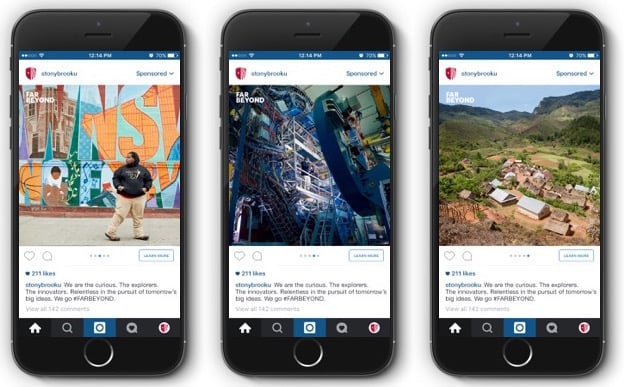Perhaps the most feared words a higher ed marketer can hear are “we’re the best kept secret,” or the even more dreaded “if we only told our story better.” They are phrases every seasoned professional has no doubt heard in their careers. And they are often drivers of strategies, creative or campaigns that may be rushed to market, feel empty or less than authentic, become ridiculed, or are very often abandoned as soon as new leadership arrives at the university or within marketing.
But it doesn’t have to be that way.
Developing a higher ed brand and bringing it to market is challenging. Higher ed marketers operate in complex, decentralized and under-resourced environments. And unlike consumer marketing challenges, there aren’t single products or customer profiles.
Colleges and universities have multiple stakeholders that have both shared and very different experiences with the campus across a spectrum of their lifetimes. There are multiple institutions that share a similar profile, competitive set, strengths, academic programs, experiences and so much more. It’s why differentiation in higher ed can be so challenging and also why judging a strategy or creative on those simple terms is shallow analysis.
These challenges require that higher ed branding be led by an inside-out strategy. We are often too quick to rush out the door, telling the world the story we want them to know without considering the importance, influence, and voice that those closest to the institution can have in ensuring that your brand is a magnet.
Which brings me to the recent success our client, Stony Brook University, has enjoyed with the launch of its brand earlier this month. Working together with the Stony Brook team (along with digital partner OHO Interactive and media partner Butler/Till), the successful launch was driven by research and followed an inside-out process.
In building the strategy, the research revealed a strong sense of momentum the institution enjoys, the clear drivers they could own to increase reputation and improve awareness, and—perhaps just as importantly—how they were misperceived by those outside the institution and how internal stakeholders were reinforcing lingering misperceptions from Stony Brook’s past.

Those inputs, along with a transparent process in sharing market research findings and early creative ideas and directions, testing those concepts through quantitative methods (vs anecdotal feedback on colors or designs) and truly reviewing them at each step with internal stakeholders, led to final direction that was accepted for being well thought out, properly vetted and widely supported by internal stakeholders.
The brand concept, FAR BEYOND, is meant to demonstrate the ways in which Stony Brook goes beyond the expected. It’s intentional in using narratives that demonstrate the interdisciplinary work of the campus, show influence and reach outside of New York, capture the ways in which the University is enabling social mobility and transformation, and demonstrate the unique programs and people that are creating such influence.
The brand strategy and guidelines lift a solid Stony Brook visual identity (created previously) with bold, dynamic typography, photography and video and give direction for tone and personality that comes through writing and story choices.
In developing the comprehensive launch plan, Stony Brook prioritized internal audiences and reflected the brand back to them in order to give stakeholders the tools and foundation to share the FAR BEYOND story.

Stony Brook’s sense of scale, impact and optimism is captured through video. Large-scale graphics were hung on the sides of campus buildings, dining halls, and throughout the academic mall. And students, faculty and staff have been empowered and informed in spreading the story.
The inside-out strategy extends through a first-phase approach to advertising that is designed to reach internal stakeholders and alumni. A focus has been placed in increasing engagement and voice in social and digital channels even with simple geo-filters on Snapchat that will be used during on-campus events this spring. And alumni, influencers and other on-campus audiences will see the debut of Stony Brook’s dynamic new magazine in their mailboxes in the coming weeks.
Just like Stony Brook itself, FAR BEYOND will morph and evolve. But by placing an emphasis in bringing stakeholders along throughout the journey and honoring their voices in the early phases of the effort, Stony Brook has a brand built to endure.












